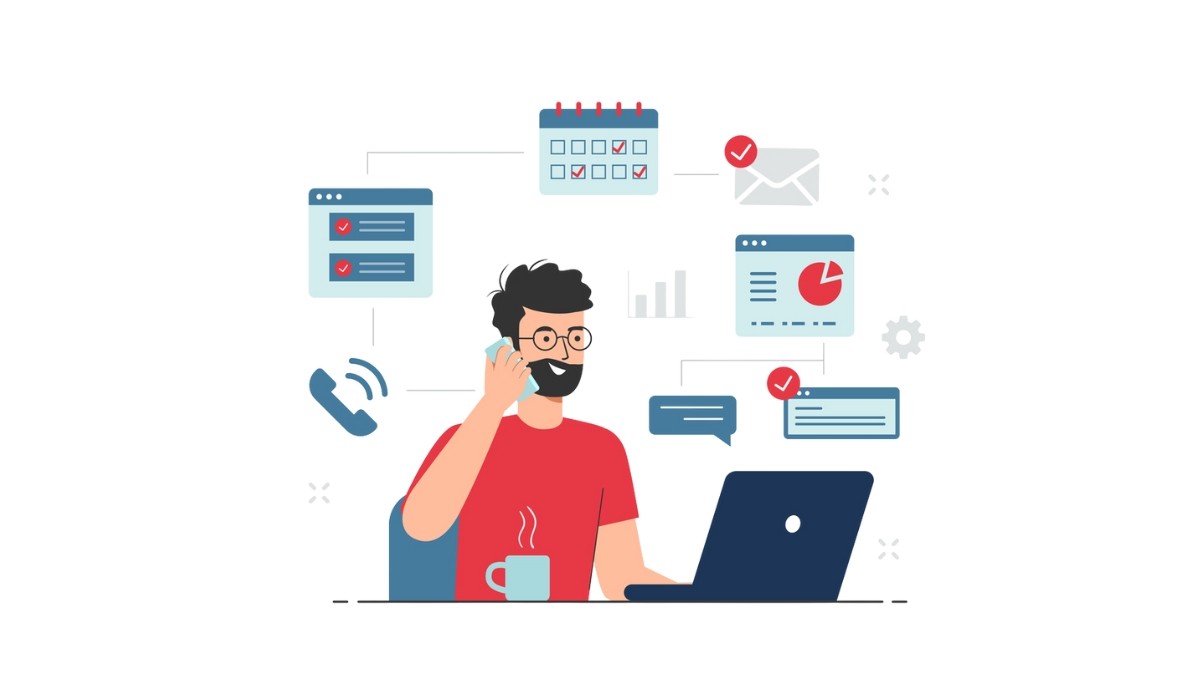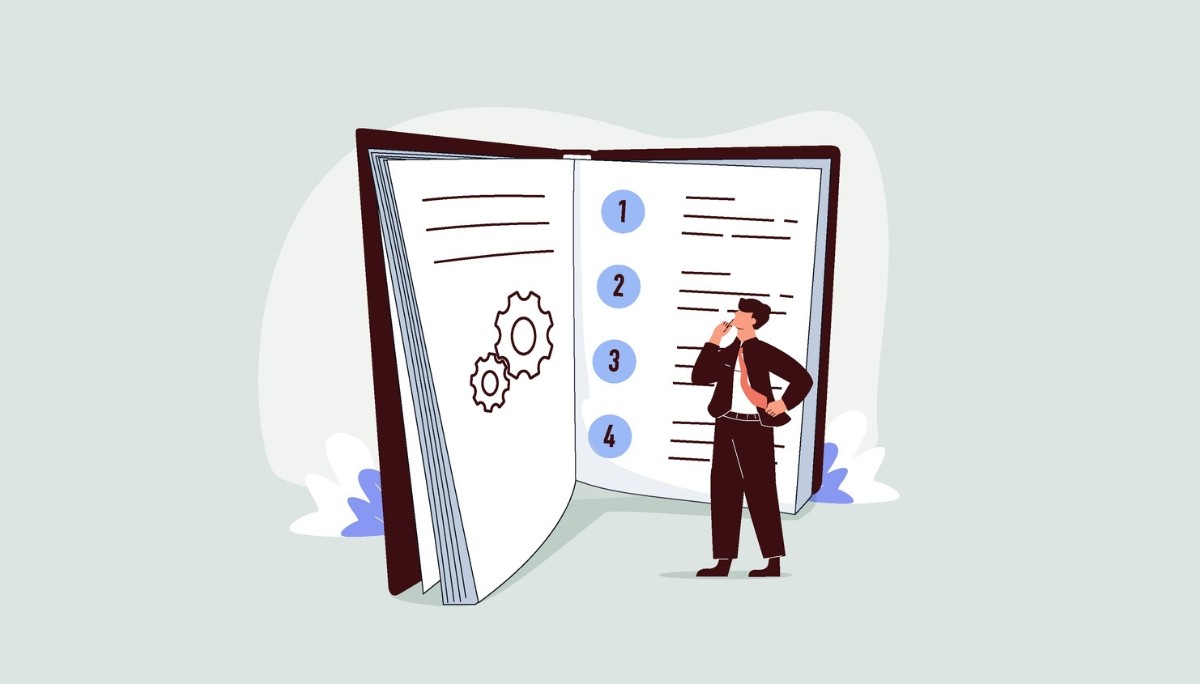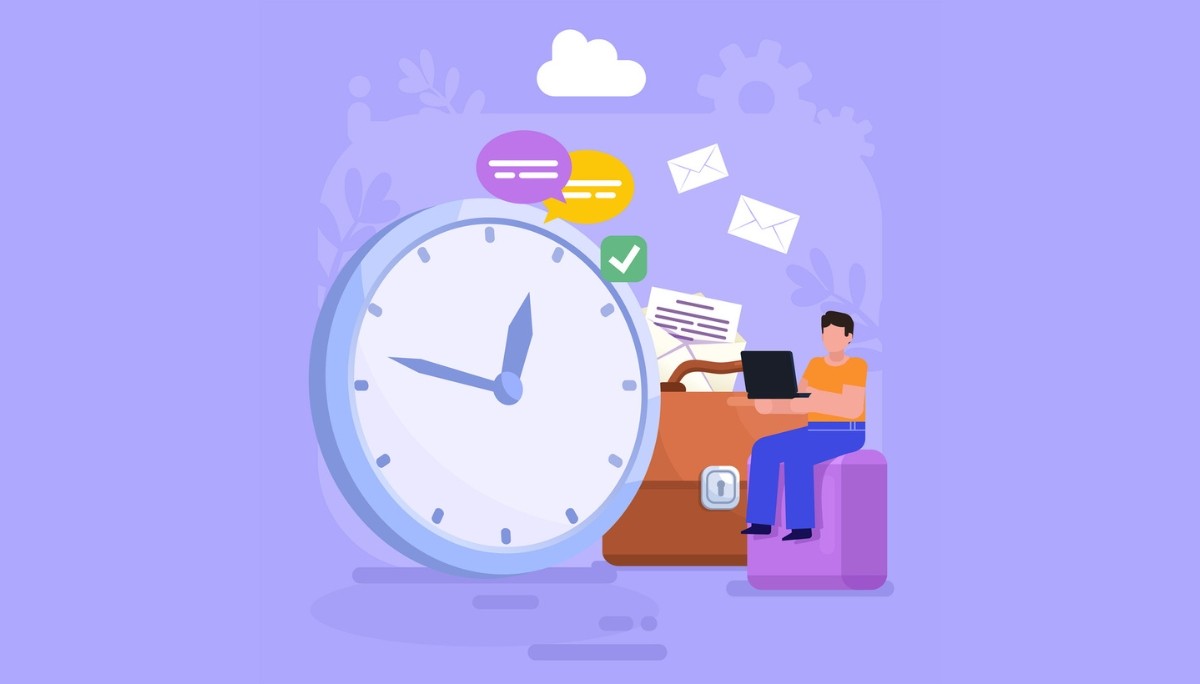9 Team Incentive Ideas for Small Teams on a Budget
By
Samantha Cox
•
May 1, 2025
If you're running a small business and want to boost your team's motivation and productivity without overspending, you're in the right place. Employee incentive programs for small businesses can help you achieve this. This article covers practical and budget-friendly ideas tailored for small teams.
Key Takeaways
Employee incentive programs are essential for attracting and retaining talent, enhancing engagement, and overall business success.
Cost-effective incentives such as extra time off, flexible work arrangements, and public recognition can significantly boost employee morale without straining budgets.
Implementing a successful incentive program requires aligning with company goals, gathering employee feedback, and regularly monitoring its effectiveness.
Why Employee Incentive Programs are Essential for Small Businesses

Employee incentive programs are not just a luxury for large corporations; they are a necessity for small businesses aiming to thrive in today’s competitive job market. These programs play a crucial role in enhancing employee engagement and motivation by promising rewards for their efforts. When employees feel seen and appreciated for their contributions, their morale is significantly boosted.
One of the primary aims of employee incentives is to promote positive performance that directly benefits the business’s success. These incentives help in attracting top talent, as potential employees are often drawn to companies that recognize and reward their staff. In fact, companies that implement incentive programs often see an average productivity increase of 22%.
Effective employee incentive programs also play a vital role in retaining talent. When employees feel valued, their overall job satisfaction increases, leading to lower employee turnover. Incentive programs foster company loyalty by making employees feel invested in the organization's success. This retention of talent is not only cost-effective in the long run but also contributes to a more stable and experienced workforce.
Moreover, boosting morale and retaining talent significantly impacts overall business success. High employee satisfaction levels lead to a positive work environment, which in turn enhances productivity and creativity within the team. By offering meaningful rewards, small businesses can create a loyal and motivated workforce that drives organizational growth and success, ultimately improving employee morale.
Cost-Effective Incentive Ideas for Small Teams

Implementing employee incentive programs doesn’t have to break the bank. Small businesses can use creative and meaningful incentives to enhance employee engagement and satisfaction. Incorporating creative ideas for employee incentives, such as innovative recognition methods or unique rewards, can inspire teams and foster a culture of continuous improvement. Cost-effective employee incentive program ideas can include:
Extra time off
Public recognition
Flexible work hours
Professional development opportunities
Team-building activities
Each of these employee incentive program ideas is designed to incentivize employees while making rewarding employees feel valued and motivated.
Let’s explore some budget-friendly employee incentive ideas that can inspire employees and boost employee morale while making a big impact on your team’s productivity. These include offering extra time off, flexible work arrangements, and public recognition to treat employees.
Implementing these cost-effective strategies can pave the way for positive behavior and a motivating work environment. These incentives can also be structured to benefit the entire team, encouraging collective motivation and engagement.
1. Extra Time Off
One of the most appreciated and effective employee incentives is offering extra paid vacation time beyond the standard leave. This not only helps employees maintain a better work-life balance but also significantly boosts their motivation and productivity. Allowing employees to recharge and explore personal goals through extended paid time off after reaching service milestones can lead to higher job satisfaction and loyalty.
Additional time off can also be used as a reward for exceptional performance or reaching significant milestones. This form of incentive shows employees that their hard work is recognized and valued, which in turn encourages them to maintain or even improve their performance levels.
Granting employees extra time to relax and rejuvenate fosters a more positive and productive work environment. Sometimes, just that, an opportunity to step away and reset, is what makes the difference. Extra time off is just what employees need to recharge and sustain high performance.
2. Flexible Work Arrangements
Flexible work arrangements are increasingly sought after by employees for improved job satisfaction. These arrangements can include remote work, flexible hours, and compressed workweeks, each designed to improve productivity and work-life balance. Offering flexible scheduling options demonstrates trust and appreciation, boosting morale and job satisfaction.
Employees desire flexible scheduling options to better manage their personal and professional lives. Allowing employees autonomy over their work hours or locations increases motivation and engagement. This not only enhances their job satisfaction but also contributes to a positive work environment and improved overall performance.
3. Public Recognition
Public recognition is a powerful tool in employee incentive programs. The purpose of recognition programs is to publicly acknowledge and celebrate employee achievements, fostering a culture of appreciation and motivation. Examples of public recognition include the ‘Employee of the Month’ award, where winners are celebrated with a trophy or a designated parking spot. Verbal recognition, such as giving shoutouts during meetings or company gatherings, is a simple yet effective way to acknowledge employee accomplishments in front of peers.
Social media recognition is another effective way to highlight employee achievements and engage a wider audience. Public acknowledgment of employee recognition and recognition of employees not only motivates the individual but also inspires others to excel.
Incorporating public recognition into the incentive program creates a positive and motivating environment that celebrates individual contributions.
Non-Monetary Employee Incentives That Make a Big Impact

Non-monetary incentives can have an impact on employee satisfaction and motivation. In fact, 65% of employees prefer non-monetary incentives such as career development opportunities and recognition over monetary rewards. These incentives not only reward employees but also foster a culture of ongoing recognition and motivation. Implementing a formal recognition program is an effective way to acknowledge achievements and reinforce positive behaviors. Recognizing one employee can also inspire other employees to strive for excellence, creating a ripple effect of motivation throughout the team.
Let’s delve into some non-monetary incentives that can make a big impact on your team. These include career development opportunities, employee wellness programs, and team-building activities. Incorporating these incentives fosters a positive and engaging work environment, encouraging employees to excel.
1. Career Development Opportunities
Offering professional development initiatives can attract and retain talent by fostering career advancement. Implementing professional development programs is a key strategy for employee growth and retention, as these programs support skill enhancement and career progression. Enhancing employees’ skills through development opportunities increases their value in the workplace, leading to higher job satisfaction and loyalty. Workshops strengthen hard and soft skills, spark new ideas, and broaden expertise, while mentoring programs and training programs facilitate career growth and development by providing structured learning and skill-building opportunities.
Investing in human resource management development demonstrates a commitment to continuous improvement and employee engagement. Customized learning stipends and classes related to current or desired roles further promote skill development and overall employee performance.
Offering career development opportunities cultivates a motivated and skilled workforce, driving organizational success.
2. Employee Wellness Programs
Wellness programs play a vital role in supporting the physical and mental well-being of your team, and they can also help increase productivity and strengthen company culture. Taking a health and wellness approach means focusing on holistic well-being, including preventive measures and inclusive initiatives that support every aspect of employee health. Offering services like yoga classes, chair massages, and nutritional counseling shows employees that their health matters.
Incorporating wellness challenges that use goal-setting and friendly competition is a great way to motivate healthy habits. To make these initiatives even more effective, consider practical employee incentive ideas such as health and wellness incentives like gym memberships, mental health services, wellness stipends, or free healthy lunches.
You can also reward participation with fun and useful perks like fitness trackers or mindfulness app subscriptions. Wellness incentives, such as rewards for reaching wellness milestones or participating in health screenings, play a key role in motivating employees to adopt healthier lifestyles. These thoughtful incentives not only boost engagement but also foster a culture of care, leading to happier, healthier, and more productive teams.
Providing foundational benefits like health insurance further supports overall well-being and demonstrates your commitment to employee health.
3. Team Building Activities
Engaging in team-building exercises can improve communication and collaboration among team members. Fun team outings benefit employees by motivating teams and improving teamwork and communication skills. Examples of budget-friendly team outings include department-wide picnics, hikes, and beach activities, which can foster a sense of camaraderie and team spirit.
Other team-building activities include in-office parties, outdoor games, online workshops, off-site meals, escape rooms, virtual golf, scavenger hunts, and volunteering with charitable organizations. Organizing these activities fosters a positive work environment where employees feel valued and motivated, engaging entire teams in the process.
4. Gym Membership
A gym membership is a fantastic employee incentive that goes beyond the workplace, supporting both physical health and mental well-being. By offering gym memberships, companies show they care about employees’ overall well-being and encourage a healthy work-life balance. This incentive is attractive to team members who value fitness and self-care, and it can be offered as a standalone benefit or as part of a broader wellness initiative.
Many gyms provide access to group fitness classes, personal training, and wellness workshops, allowing employees to choose activities that best suit their interests and needs. By making it easier for employees to stay active, companies can help reduce stress, boost employee morale, and increase productivity. Even partial reimbursement for gym memberships or partnerships with local fitness centers can make a big difference, showing employees that their health is a priority and contributing to a more energized, engaged team.
Monetary Incentives That Drive Performance

Monetary incentives are a powerful tool to motivate employees and drive performance and commitment. Certain monetary rewards, such as bonuses or profit-sharing, can serve as a fantastic incentive to boost employee engagement. Common forms of monetary incentives for employees include bonuses, raises, and profit-sharing schemes, which encourage improved performance and loyalty. Investing in monetary incentives results in significant benefits such as increased productivity, higher employee retention rates, and improved morale, along with a financial incentive for sustained engagement.
Let’s explore some monetary incentives that can drive performance in your team. These include performance bonuses, profit sharing, and gift cards and vouchers. Offering these incentives cultivates a motivated and high-performing workforce, driving organizational success and financial rewards.
1. Performance Bonuses
Performance bonuses are monetary rewards given for hitting milestones or targets. It is important to establish clear metrics and objectives when offering performance bonuses to guarantee that employees know what they need to achieve. Examples of performance incentives include cash bonuses for closing sales, generating revenue, meeting other quantifiable milestones, cash rewards for exceptional achievements, and referral bonuses for successful employee referrals.
Performance bonuses can be awarded at the end of the calendar or fiscal year, quarterly, or upon project completion. Structuring performance bonuses to directly motivate sales teams can drive them to achieve higher targets and align their efforts with company growth. Setting clear and attainable organizational goals motivates employees to perform at their best, achieving organizational success and enhancing job performance.
2. Profit Sharing
Profit sharing is a powerful way to keep employees involved by giving them a direct stake in the company’s success. By distributing a portion of profits based on employee achievements, these programs help employees feel valued and motivated to contribute at a higher level.
When employees see themselves as part-owners, their engagement increases, they remain loyal, and their commitment to company goals strengthens. This not only helps employees achieve more individually but also supports long-term business growth.
Profit-sharing plans can be tailored to match company performance, offering flexibility while aligning employee interests with organizational outcomes. Profit sharing can also be integrated with retirement plans, providing employees with long-term financial security in addition to immediate rewards. Ultimately, these programs help retain employees by fostering a sense of ownership, purpose, and shared success.
3. Gift Cards and Vouchers
Gift cards and vouchers are a versatile way to reward employees and reinforce a positive workplace culture. These rewards give employees the freedom to choose something meaningful to them, making recognition more personal and impactful. Personalized gift cards can serve as a meaningful reward, providing genuine significance and motivating employees to continue performing at their best.
Spot awards, like gift cards or small cash bonuses, can be given on the spot for exceptional performance, adding a layer of immediacy and motivation. When used as part of broader recognition programs, these incentives help build a culture of appreciation and ongoing encouragement.
Incorporating gift cards into your social recognition efforts not only boosts morale but also drives performance in a cost-effective and meaningful way. Recognizing achievements in this way helps employees feel valued, appreciated, and more connected to the organization.
Fostering Employee Retention in Small Teams

Employee retention is especially important for small teams, where every team member plays a critical role in the company’s success. Implementing employee incentive programs is a proven way to keep employees engaged and motivated to stay. These incentive programs can include a mix of monetary incentives, such as profit sharing or performance bonuses, and non-monetary rewards like employee recognition, professional development opportunities, and flexible work schedules.
Small teams can also benefit from regular team-building events and wellness initiatives that foster a sense of community and shared purpose. Providing access to educational resources and supporting ongoing professional development helps employees grow within the company, increasing job satisfaction and loyalty. By rewarding employees for their contributions and prioritizing their well-being, small businesses can reduce turnover, increase productivity, and build a strong foundation for long-term success.
Boosting Employee Morale on a Budget
You don’t need a big budget to make a big impact on employee morale. Creative, low-cost employee incentives can go a long way in motivating employees and creating a positive work environment. Simple recognition programs, like public praise, milestone celebrations, or small rewards, can make employees feel valued and appreciated. Flexible work schedules, wellness initiatives, and professional development opportunities also support overall well-being and job satisfaction.
Consider offering employee gifts such as company swag, gift cards, or even organizing team-building events like potlucks or volunteer days. Referral programs and tuition reimbursement programs are effective employee incentives that encourage growth and engagement without breaking the bank. Don’t overlook the importance of mental health support, which can be provided through access to resources or wellness stipends. By focusing on what truly matters to your team, you can boost employee morale, foster a positive work environment, and drive business success, even on a tight budget.
How to Implement an Effective Employee Incentive Program
Implementing an effective employee incentive program requires a strategic and thoughtful approach. Considering a variety of employee incentive program ideas can help tailor the program to your team's needs. An effective incentive program should align with both business objectives and the specific preferences of employees. Celebrating employee achievements can significantly enhance the impact of incentive programs.
Let’s explore some key steps to implementing an effective employee incentive program. These include aligning with company goals, gathering employee feedback, and monitoring and adjusting the program. Aligning incentives with the company's mission guarantees that motivational programs resonate with the organization's core values and culture. Incorporating company values and the company's values into incentive programs reinforces desired employee behaviors and strengthens organizational culture. Following these steps leads to a successful and motivating incentive program.
Align with Company Goals
Employee incentive programs work best when they align with your company's mission and core values. When incentive initiatives support organizational goals, they not only drive business success but also boost employee satisfaction and engagement.
Incorporating employee incentive ideas that reflect what your team truly values, such as extra time off, recognition, or wellness perks, can make these programs more impactful. Including team members in the planning process ensures the incentives are relevant, meaningful, and more likely to resonate.
Common employee incentives like performance bonuses, learning stipends, and flexible scheduling help build a cohesive and motivating workplace. This collaborative and intentional approach fosters a sense of ownership, increases morale, and keeps employees energized and committed.
Gather Employee Feedback
Gathering employee feedback is crucial for understanding employee satisfaction and preferences. Personalizing employee incentives is important because employees are more motivated when incentives are meaningful to them. Methods for gathering employee feedback include leveraging technology, conducting HR hackathons, and using employee journey mapping.
Tailoring incentives to employee preferences helps with overall buy-in and makes the incentive program feel more meaningful. The best way to personalize employee incentives is by seeking feedback directly from employees.
Gathering input helps create a more effective and motivating incentive program that resonates with the workforce.
Monitor and Adjust
Regular assessment of incentive programs' effectiveness is critical for making necessary adjustments based on employee feedback. Continuously monitoring and adjusting the program ensures the incentives remain relevant and impactful.
This approach helps to maintain high levels of employee motivation and boost employee engagement among loyal employees, ultimately motivating and engaging employees.
Real-Life Examples of Successful Small Business Incentive Programs
Incentive programs promote a strong company culture and improve job satisfaction. For instance, a small tech startup implemented a retention incentive that included a bonus agreement for employees who stayed for a defined period. This strategy not only improved employee retention but also boosted overall morale within the organization.
A small retail business used incentive programs specifically designed for its sales team, such as SPIFs and commission programs. These programs were tailored to reward sales teams for both short-term achievements, like meeting monthly sales targets, and quality metrics, such as customer satisfaction scores. As a result, the sales team was more motivated, and the company saw improved sales performance and alignment with revenue goals.
Another example is a local marketing firm that introduced a points-based recognition system. Employees could earn points for various achievements, which they could then redeem for rewards. This system fostered a culture of ongoing recognition and motivation, leading to higher employee engagement, employee loyalty, and satisfaction.
Common Mistakes to Avoid When Creating Incentive Programs
Creating effective employee incentive programs requires careful planning and execution of an incentive plan.
Common mistakes include:
Lack of clear objectives
Inequitable distribution
Unhealthy competition
Ignoring feedback
Inconsistent recognition
Inconsistent recognition can lead to feelings of neglect among employees. This may ultimately result in resentment toward the organization.
Focusing solely on top performers can limit overall program effectiveness; involving a broader range of employees can yield better results. Viewing employee incentives as investments rather than expenses can promote long-term engagement and reduce turnover rates. Avoiding these pitfalls helps create successful and motivating incentive programs.
Leveraging Technology for Employee Incentive Programs
Technology can significantly enhance the management and effectiveness of employee incentive programs. Integrating tools like Fonzi with existing HR systems can streamline the process, making it easier to manage and track incentives. Fonzi, for example, automates key recruiting workflows and improves hiring efficiency, allowing HR to focus more on implementing incentive programs.
Employing technology such as employee journey mapping allows for tailored and personalized incentive programs that better meet employee needs. Leveraging technology ultimately enhances the overall employee incentive experience, making programs more engaging and effective.
Adopting technological solutions creates a more dynamic and motivating work environment.
Summary
Employee incentive programs play a key role in helping small businesses keep their teams motivated, engaged, and committed for the long run. Whether it's through cost-effective perks, non-monetary rewards, or financial incentives, the right program can create a more positive and productive work environment.
Simple strategies like offering extra time off, flexible schedules, public recognition, career development, wellness initiatives, team-building events, performance bonuses, profit sharing, or even gift cards can go a long way in showing appreciation and keeping employees inspired.
To make these programs truly effective, it's important to align them with your company's goals, listen to employee feedback, and adjust as needed. Using technology to track participation and impact can also make the process easier and more efficient. When done right, employee incentive programs can build a culture where people want to stay and grow.




